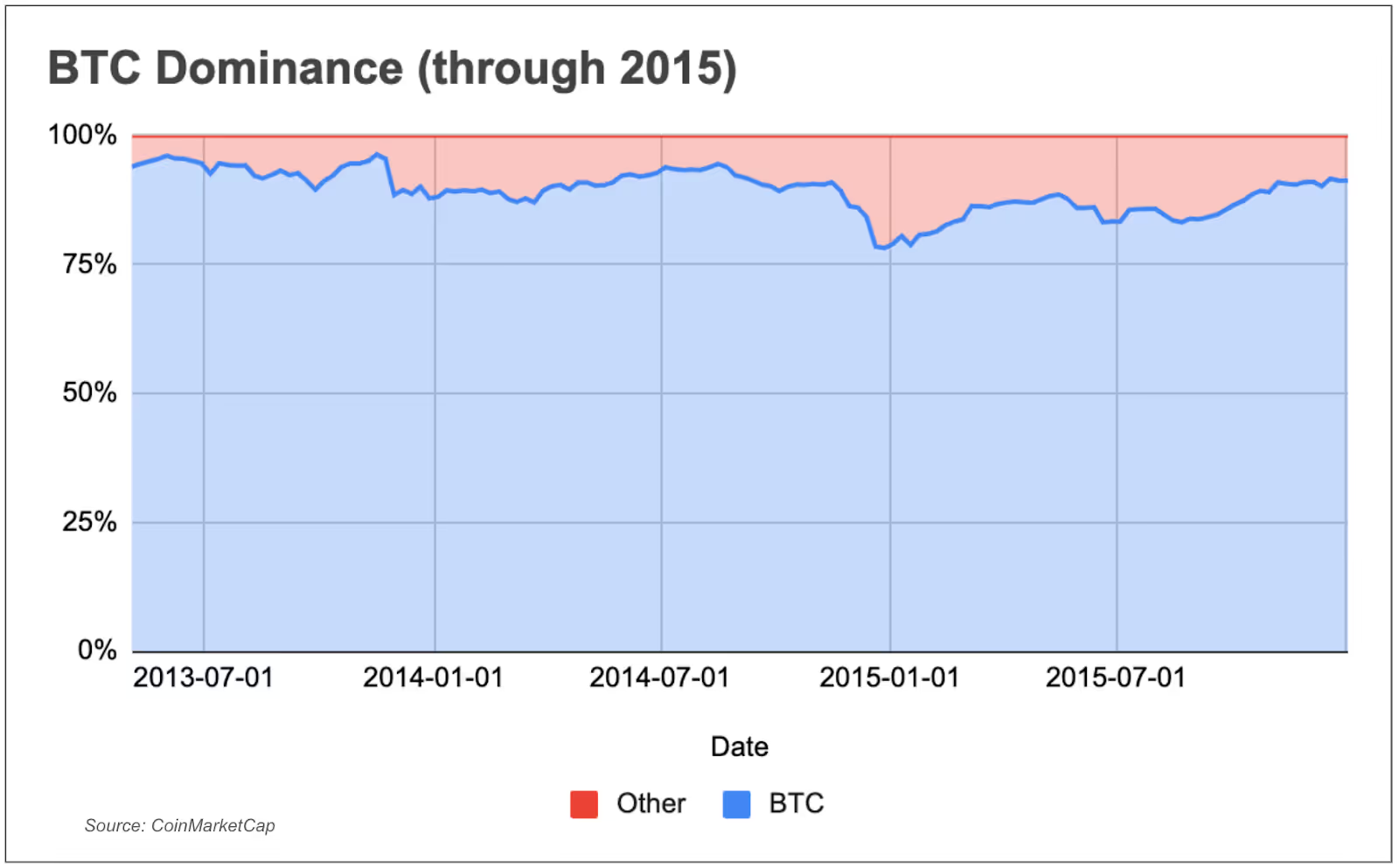
Progressing from New Plateaus

Progressing from New Plateaus
As the saying goes: most people overestimate what they can achieve in a year and underestimate what they can achieve in a decade. As 2023 comes to a close, I thought it’d be fun to share some reflections on the evolution of the crypto ecosystem through my lens over the last decade, as well as my (buoyant) take on what may come next.
I entered the crypto ecosystem in 2013 as a nights-and-weekends Bitcoin enthusiast, while working a day job in Visa’s global network processing group. When Bitcoin began to garner more attention that November with BTC crossing $1,000 for the first time, I had the opportunity to help inform the executive team on this frontier innovation as related to global payments that I felt we should be paying close attention to. Shortly thereafter, in 2014, I made the jump to working in crypto full time as an early employee at Coinbase, where we endeavored to make using Bitcoin safe, easy, and compliant for the average person.
This was a special moment in the history of our space, with a small group of early practitioners optimistic about use of the Bitcoin protocol beyond just “digital gold.” Bitcoin was the protocol that first brought decentralized consensus to life and we were willing to look past the constraints of the day to believe in a future of open, decentralized applications running atop this singular protocol.

Admittedly, this led to various ahead-of-their-time efforts and an over-emphasis on Bitcoin as a catch-all solution (often in a quasi-tribal maximalism). We spent countless hours pushing forward merchant payments, social micropayments / tipping, global remittances and gig economy payouts … all atop the Bitcoin protocol. And of course, while this work would ultimately pave the way for things to come, we simply didn’t have sufficient technology to enable the user behaviors we hoped to see.

In hindsight of course it's easy to see our efforts were hindered by significant limitations across the board. Confirmation times were too slow, price volatility was too high, products were mostly hacked together solutions, and barriers to entry were too tough. Hence, most of these early attempts would ultimately be wound down in favor of yet-to-be-invented technologies.

Ten years later: Bitcoin is no longer the only game in town. Programmability and tooling have reached a whole new level. Scaling has improved by orders of magnitude. Cryptonative assets are complemented by onchain representations of fiat currencies like USD stablecoins. Digital assets no longer just mean digital currencies. Onchain UX is beginning to look and feel palatable to a wider audience beyond early adopters.
And as a result we’ve seen the ecosystem explode. While Bitcoin has soared from millions to several hundred billion dollars in market cap, become one of the most popular brands in the world, and has potentially major ETFs on the way, Bitcoin dominance (its share of the value of the total crypto space) has dramatically decreased from roughly 100% to about 50%. Over the last decade, we’ve seen the market cap of the ecosystem as a whole balloon from ~$1B to over $1T. The number of people building in this space has increased by an order of magnitude. The number of people who have interacted with digital assets has increased by multiple orders of magnitude. And all the while, Ethereum itself (and hence modern onchain programmability) is today only eight years old.

As I reflect on the state of our nascent ecosystem just a decade ago and the incredible amount of progress since then, I’m energized thinking about what may come next. The familiar rhythm of past crypto cycles (infra-app and bull-bear) paired with the high quality of founders and teams that continue to head into our space make me optimistic for the year ahead and beyond.
Expectations for 2024
With all of that in mind, here are a few of my expectations for the year ahead:
The Bitcoin narrative will come roaring back. The idea of tech-enabled self-sovereignty was foundational to the origins of the entire crypto ecosystem. While the space has trended less ideological over the years, the grassroots narrative of a borderless, self-sovereign store of value will re-enter mainstream discussion in 2024, alongside a global political and economic backdrop that has many more people tuned in.
Stablecoin usability and usage will reach new heights. 2023 showed many in the US what much of the world was already aware of – the banking system isn’t necessarily what you thought it was. Stablecoin transaction volume will reach new peaks as individuals and businesses embrace the benefits of globally open payment rails for stable-value digital assets. Global payouts for remote and microjobs, tipping, and money streaming are all coming in hot, this time with UX as good or better than incumbent solutions.
DeFi will finally break out from the crypto echochamber. Globally open, composable financial tools have been proven out with cryptonative assets like ETH, particularly by those looking to leverage existing holdings. In 2024 however, user orientation will shift beyond speculative trading and onchain representations of “real world” financial assets will kick off their long awaited adoption curve. Faster and cheaper transactions will enable a wider array of users to not give up on the first attempt.
Open and composable consumer / social products will reenter the spotlight, this time with tangible advantages for mainstream users. Open social graphs like Farcaster and integrated marketplaces like Bountycaster will provide magic moments that will be far more convincing to new users than ideological talking points.
Stretch goal: mainstream understanding that most onchain assets are not “cryptocurrencies” (and most NFTs are not 10k PFPs). While the branding of bitcoin, the original onchain asset, as a cryptocurrency has resulted in predictable challenges for the space, Zora’s Magic Machine will help onboard a new cohort of users whose first impression is oriented around new forms of ownership rather than currency.
Looking to the decade ahead
Ten years in, I find it easier than ever to be optimistic about the future of this space. While the memorable segments of market cycles tend to be peaks and troughs, it’s the new plateaus that say the most about the progress we’ve made. 2024 seems to me to be a new plateau, from which the ecosystem will continue to build from.
We’re entering 2024 with an order of magnitude more builders in the ecosystem than a decade ago. Those entering the industry for the first time have the benefit of starting from a significantly more robust foundation than that of prior cycles. Lower barriers to entry and higher leverage per person are a recipe for something great.
We’re also entering 2024 with orders of magnitude more users than 2014. And the cohort of first time users in 2024 will have so much more to do and significantly better ways to do it than in 2014. A larger top of funnel and higher conversion rate for people coming onchain are how we will break outside our echochamber, further into the mainstream.
What will these new entrants to the ecosystem, both builders and users, be able to imagine that would have been unfathomable a decade ago? The next decade in crypto, standing on the shoulders of what’s come before, has the potential to create even more change for the world than the last.
—
Thanks to Spencer Bogart, Jesse Walden, Linda Xie, and Jacob Horne for reviewing this post, as well as Haun Ventures teammates Chris Ahn, Breck Stodghill, James Rathmell, and Rachael Horwitz for conversations and contributions going into it.





